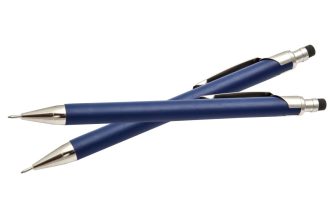Contents
If you are looking forward to starting woodworking or you already have some woodworking skills but you don’t own or work with a router yet, this summary is specifically meant for you. Even if you already own it, you might still proceed to read it because you can find out something which would positively increase your woodworking skills. Well, we aren’t going to touch on the process of routing but we would rather find out what is the difference between the plunge router and the fixed base router and what are the pros and cons associated with each type of routers.
Fixed Base Router
Our favourite:
DEWALT DWP611PK FIXED/PLUNGE BASE KIT
$196.18 in stock
8 used from $157.26
Features
- Durable 1.25HP motor of DEWALT router delivers the power to meet the toughest applications
- Variable speed control feature of DEWALT plunge router enables bit speed to be optimized for changing applications
- Soft-starting motor features full-time electronic feedback that maintains motor speed through the cut
- Dual LED's and clear sub-base ensure maximum visibility in operation
- Adjustment ring enables controlled bit depth changes to within 1/64-inch (fixed base only)
Most professional woodworkers would recommend this router as the best one with a fixed and plunge base. It is highly operational and can get the job done.
We would start out by first looking into what a fixed base router is and the advantages it has over other types of routers, the pros, and cons of using it. We have done the research for you and we have fished out information by testing and comparing data about the types of routers. When it comes to fixed-base routers, these types of routers are somewhat famous and can be found in virtually any professional woodworking joints because they result in higher quality results when compared with the other counterpart, the plunge router. This doesn’t mean that it isn’t a good choice either.
If you are a beginner and you are just starting out, consider getting a fixed base router as your first router because it is easier to use with a more precise cut. Precision is a very valuable asset when you are working with wood especially the tiny bits and a fixed base router is just the tool to give you that. The aim of a fixed base router is for it to be locked physically and set completely hence the name ”fixed-base router”. This way the cutting bit is made to be stable and that is why it gives higher precious when compared to the fixed base router. Power needs to be applied to the plunge router to drive the bit to the wood you are cutting but when it comes to fixed-base routers, it cannot be shifted once it is set in place.
One bad part about this type of router is that when users need to cut the material from the top, they would encounter some challenges because these tools are not built to handle tasks like that.
Plunge Router
Our favourite:
TRITON TRA001 DUAL MODE PRECISION PLUNGE ROUTER
Features
- Single button switches from conventional plunge to fixed-base router with rack and pinion mode
- Single wrench bit change through base is achieved with automatic spindle lock
- Micro winder enables continuous fine depth adjustment through the full plunge mode
- Soft start and variable speed provides the perfect speed for all cutter types
This product is the best plunge router anyone can get their hands on. It has an outstanding manufacturer backing its production and servicing.
These types of routers are harder to operate if you do not have any experience with it at all but it is also possible to learn how to operate it, just a little practice and patience would get you there. The primary factor that differentiates a fixed base and a plunge router is the mode of operation. The plunge router is operated by pushing down your device to cut your wood particle and this is possible due to the arms and strong spring which is situated in most plunge routers.
A plunge router features a set of arms that helps users to plunge into the material manually and start cutting right into it. That is the purpose why it is named plunge router – the user is required to press the bit into the wood using the force to cut through the material. One of the good parts about the plunge router, when compared with the fixed base router, is that it gives a smoother fluting, dados and grooves application on the wood you are engraving. Most people feel that the plunge router cannot be used for edge working but this is not entirely true. They can be used but you won’t get the same clean result you will get when you use a fixed base router.
Features on Plunge or Fixed Base Router
No matter the type of router you use or purchase, it is supposed to have a variety of features that would make it easier and efficient to use during operation. These can be in the form of ergonomic handles, speed control, electronic feedback system or horsepower. These may differ due to usefulness, functionality, and versatility and they should be deemed when choosing a professional router.
Variable Speed Control
This is a common but very important feature one has to look into when choosing the perfect router system. It gives the users more control while the router is in operation. Various speed settings mean various results on various woods hence resulting in more versatility.
HP Rating of the Motor
When it comes to HP (Horsepower), it is important to get a plunge vs fixed base router which has nothing less than 2HP. Devices with lower HP do not provide enough power to help users to cut thicker and rougher woods. When it comes to the fixed base router, it comes with various features that would make up and cover the lack of horsepower. This means we are not focusing only on the horsepower of the router.
Collet Diameter
Collet is simply a type of chuck that firmly attaches around things like a band. This part of the router helps keep working bits tightly in place when the router is in operation. Collet diameters are the size of chuck your collect can contain. With that in mind, it is advisable to go for routers which have a collet diameter of at least ½ or ¼. The ½ size is much harder to come across and once you are able to get your hands on it, you will find out that it is more expensive than its counterpart, the ¼. ¼ sized chuck can also fit into a ½ collect diameter but it wouldn’t fit vise verse.
Electronic Feedback System
This is possibly one of the most important features either a plunge router or a fixed base router should have. This feature makes the device able to sense the load and adjust the router to give users the best cutting result. The only negatives about this feature are that it affects the price range of products therefore you have to spend more to get this feature. Although this feature may have various uses, it is still a factor one has to consider if it is worth the extra money or not. One question you have to ask yourself is “do I plan on using this product professionally, or it’s just for a light job”.
Ergonomic handles
This feature is a non-complicated one and it is rather self-explanatory. When searching for both plunge and fixed base routers, consider getting one that is very comfortable to hold and use. The handle of a product depends entirely on the manufacturer. While some have single-handle grip others may go the extra mile to implement a double-handled grip. No matter the versatility of ergonomic handles, the important factor here is to get one that would improve your level of comfort. If you feel better using a single-handle grip, consider plunge or fixed base routers that have these features.
Which Type of Router is Easier to Use
The question that comes into the mind of most users or people who are new into woodworking is which one is easier to use because there are enthusiasts out there who just started woodworking the other day and they are searching for the most convenient type of router to use for their projects. We don’t get to know the answer now because there are different factors we have to look into and explain before making any comments. Just so you know, never buy a power tool because it is much easier to use, rather buy the product you actually need. For example, if you want to cut wood from the top, avoid getting a fixed router because these types of routers are not designed to handle that kind of task. But if you need a model which would provide you exact cuts around the edges, consider going for the fixed router.
If any need is to pick out the easiest to use when it comes to plunging vs fixed router, we would advise for users to go for the fixed base router type which is very easy to master especially if they don’t have any experience. Newbies and less skilled persons can get more precise cuts because the tool technically does all the work for them.
Which Type of Router is Better for Woodworking?
Well, we come to the part where everyone wants to know the answer to which type of router is better for their woodworking skills, the plunge router or the fixed base router. Due to the fact that you actually made it this far in the summary, we would be glad to share our proficient impression with you. Just as we stated above, if by any chance you do not have any previous woodworking experience or you haven’t worked with a prominent woodworking tool like this, the fixed type of router would be the best option for you. The motive for this choice is because it is easier to handle and use if you are new to the woodworking world.
However, if you have experience with woodworking and you have been working with large power tools and materials such as wood, you would want to purchase the plunge router type. This falls to the versatility of the power tool and at the same time, it has a broader area of applications. The plunge router would enable its users to administer various cuts and if used properly, you can improve the quality of your project. So side by side, both types of routers are excellent and they will definitely get the job done but if you are really severe about your skills, the plunge router is the perfect option for you. You can also consider getting the two types of routers if you are on cash just to be sure you are covered in all areas.








